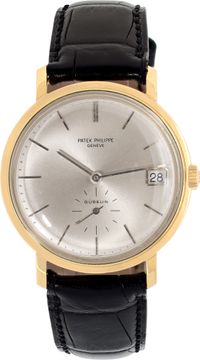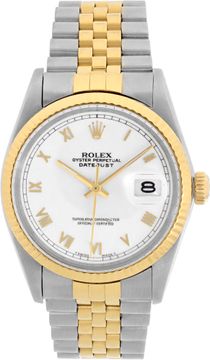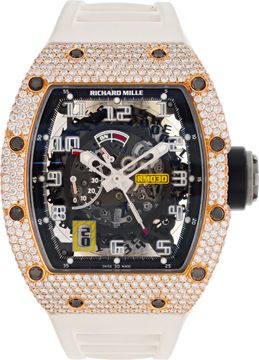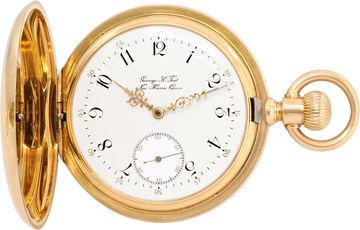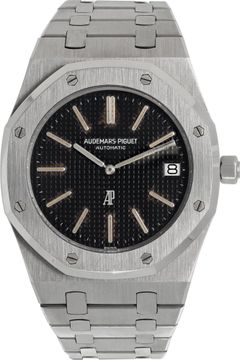The History and Evolution of the Rolex Explorer II
Since 1971, the Rolex Explorer II has symbolized resilience and adventure, crafted for those who thrive in extreme environments. Among its models, the Rolex Explorer II 16570—introduced in 1989—stands out, blending rugged practicality with classic style. Loved by collectors, this model embodies the spirit of exploration while Rolex’s dedication to precision and endurance, available through Gray & Sons Jewelers' selection of pre-owned watches.
Explore the story behind the Rolex Explorer II history and see why the 16570 continues to be a favorite in the world of luxury watches with Gray & Sons Jewelers.
It’s interesting to think that on the one hand, Rolex produces fine luxury watches on a large scale for the general population (who can afford them, of course). Yet, on the other hand, if you look at many of their collections, they were, in fact, initially created for a niche audience.
The Submariner for divers, the GMT-Master for pilots, and the Explorer II for spelunkers. That’s right, spelunkers — adventurers who explore caves. While there are a few common features between the very first Explorer II reference and the latest one, there have been plenty of upgrades and changes over the decades.
From the ref. 1655 that debuted in the 1970s to the newest iteration, ref. 226570, which launched in 2021, let’s delve into the history of the Rolex Explorer II. Join us as we investigate the Explorer II evolution through a handful of model
In 1971, Rolex unveiled the Explorer II as the larger sibling to the original Explorer I wristwatch. The inaugural reference was the Explorer II ref. 1655, sporting a 39mm stainless steel case and matching steel bracelet. And because these Rolex watches were created specifically for spelunkers, there are a few key features on the ref. 1655 that made it particularly practical for them.
First, there’s the extra 24-hour hand that points to a fixed bezel with the 24-hour markings. The logic behind this was that folks that explore caves are often in the dark, thus, can’t tell the difference between AM and PM. Therefore, because the 24-hour hand points to either 10 hours or 22 hours, the wearer can now know whether it’s day or night. It’s important to note that Explorer II ref. 1655 is not a dual-time watch since the 24-hour hand is coupled to the traditional hour hand and the bezel is fixed. We will see that later on in the Rolex Explorer II history, Rolex did make changes so that the watch eventually became a dual-time timepiece.
Rolex equipped the early models of the Explorer II ref. 1655 with an orange 24-hour hand, later replacing it with a red one. However, those red ones actually faded orange over time, so today, all of the 24-hour hands found on Explorer II ref. 1655 watches look orange! The Explorer II ref. 1655 runs on the Rolex Caliber 1575. This is the same mechanical movement of the GMT-Master manufactured during the same era.
The Explorer II ref. 1655 was also heavy on the lume details to ensure optimal legibility in the dark. In addition to the luminescent markers every five minutes, there are small luminous squares every 2.5 minutes too. This results in a total of 24 glow-in-the-dark accents — one for each hour of the day. Paired with the luminescent 24-hour hand, the Explorer II ref. 1655 did a great job of telling the wearer the exact time of day (or night) even in complete darkness. Given its manufacturing time frame (1971 to 1985), Rolex used self-luminous tritium for luminescence as illustrated by the “T SWISS T” marking below 6 o’clock.
As with most vintage Rolex watches that were in production for a good amount of time, the Explorer ref. 1655 underwent a few dial modifications within the same reference. Rolex enthusiasts and collectors label these different dial designs as MARK 1/2/3/4/5 dials. There are at least five Marks (MK) dials documented among vintage Explorer II ref. 1655 watches, each with slight differences in logo styles and/or font.
Steve McQueen Rolex?
While the Explorer II ref. 1655 was not a popular model during its era, today it’s a different story. It’s actually a very sought-after vintage Rolex tool watch in collecting circles. It even has a few of its own nicknames. The first is “Freccione” derived from the Italian word for arrow, “freccia,” which is in reference to its famous arrow-tipped hand.
For more information on other Rolex watches, check our Rolex watch collection at Gray & Sons.
Another popular nickname of the Explorer II ref. 1655, is the erroneous “Steve McQueen Rolex” label, which stuck after it was misreported that the actor wore one. There actually isn’t any photographic evidence that Steve McQueen ever sported an Explorer II. His Rolex of choice was a Submariner. Nevertheless, the Explorer II ref. 1655 will forever be known as the Steve McQueen Rolex!
Rolex Explorer II Ref. 16550
In Rolex-speak, “transitional references” refer to those models that include features of preceding versions along with additional modifications that pave the way for the design of future references. Take for example the Explorer II ref. 16550 presented in 1985. With its introduction, the transitional Explorer II ref. 16550 brought the larger 40mm case size, a sapphire crystal, and Caliber 3085. Rolex also revamped the dial to look similar to other sports models with the famed Mercedes-style hands and the combo of triangular, round, and rectangular lume-filled hour markers. The 24-hour hand was now also longer and thinner. Plus, Rolex now offered the Explorer II ref. 16550 with the option of a black or white dial rather than just black. The bezel remained fixed and included the 24-hour scale but the design featured inverted triangles rather than sticks for odd numbers.
The Caliber 3085 movement now meant that the 24-hour hand could be adjusted independently from the traditional hour hand to point to a specific numeral on the fixed 24-hour bezel. Therefore, the Explorer II graduated from merely indicating day and night hours to a GMT watch, able to display a second time zone. With this ultra-practical move, the Explorer II was now more appealing to a larger audience of globetrotting adventurers.
There’s an intriguing feature for Rolex collectors on the white dial version of the Explorer II ref. 16550. Due to a paint defect, the white dials actually turned into a creamy ivory color after some time. And in true vintage Rolex fashion, that “defect” commands a premium price in the market over its black dial counterpart! The Explorer II ref. 16550 was only in production for four years until 1989.
Rolex Explorer II Ref. 16570
In 1989, Rolex unveiled yet another updated version of the Explorer II with the ref. 16570. It had many of the same features as the preceding ref. 16550 with a couple of notable upgrades. First, there was the new Caliber 3185 in the earlier Explorer II ref. 16570 models. Moreover, although the dial layout stayed the same, another signature difference of the Explorer II ref. 16570 was the use of black outlines surrounding the round hour-markers on the white dials rather than the more traditional white gold ones. Against the white dial, it’s a striking look indeed. A common nickname for white dial versions of the Explorer II, regardless of the specific model, is the “Polar Explorer.”
Rolex made the Explorer II ref. 16570 for 22 years and as such, this particular reference underwent several changes over the course of its production run. While early models ran on Caliber 3185, later models housed the Caliber 3186. Furthermore, Rolex changed the luminescent material a few times. First came tritium (labeled with SWISS T < 25). Then in the late 1990s, Rolex switched to Luminova and the dials are labeled with “SWISS” under 6 o’clock.
Finally, Rolex changed to SuperLuminova around 2000 and the dials are marked with “SWISS MADE” under six. It’s also worth noting that Rolex began engraving the rehaut (the space between the dial and the crystal) of its watches with “ROLEX ROLEX ROLEX” starting in the mid-2000s as an anti-counterfeiting measure. Therefore, Explorer II ref. 16570 models made from the mid-2000s and after feature this engraved rehaut. Taking all these evolutionary changes to this particular long-running reference into account, later examples of the Explorer II ref. 16570 are notably different from early examples of the same model.
Benefits of Owning the Rolex Explorer II 16570
The Rolex Explorer II 16570 offers collectors a rare find: a mix of vintage charm and modern dependability. Often available at a more accessible price in the pre-owned market, it lets you own a piece of Rolex Explorer II history without the premium of newer models, a lasting value that resonates with both new collectors and longtime Rolex fans.
1
A Watch Made for Adventure: The Rolex 16570 Explorer II has proven itself in some of the toughest places on Earth. Trusted by explorers and thrill-seekers alike, this watch stands up to rugged conditions. Yet, it’s just as dependable for everyday life, offering the kind of resilience you can rely on wherever you are.
2
Iconic Features of the Rolex Explorer II 16570: With a 40mm case, dual-time feature, and standout Polar dial, the Rolex Explorer II 16570 is quietly distinctive. It doesn’t flaunt its style but impresses through Rolex’s timeless design and functionality. This model holds a special place in Rolex Explorer II history, celebrated for its elegance and durability.
3
Timeless Value and Enduring Appeal: The Rolex 16570 Explorer II offers more than just timeless style—it embodies the innate value that Rolex watches are celebrated for. Known for their craftsmanship and legacy, Rolex watches often hold their worth, and the 16570 is a favorite among collectors for its classic design and lasting significance. It’s a timepiece that blends personal and collectible value seamlessly.
For more iconic Rolex collections, explore Gray & Sons.
Rolex Explorer II Ref. 216570
To celebrate the 40th anniversary of the model, Rolex presented the Explorer II ref. 216570. Although it’s a completely revamped and modern model, it is also a fitting tribute to the inaugural Explorer II ref. 1655.
The Explorer II ref. 216570 features an increased case size of 42mm, making it an even more robust version of the cave dweller Rolex. To balance the large case, the hands and lume plots on the “Maxi Dial” also grew in size for even better legibility. Like its predecessor, the Explorer II ref. 216570 is offered with either a black dial or a white “Polar” dial.
In honor of the original Explorer II ref. 1655 “Freccione,” Rolex outfitted the latest Explorer II with a similar orange arrow-tipped 24-hour hand. But of course, unlike the original, the current Explorer II is a dual-time watch with a second time zone display thanks to the independent 24-hour hand. That, coupled with the date window at 3 o’clock, makes this the ideal watch not just for adventurers, but global travelers too. Powering the Explorer II ref. 216570 is the Caliber 3187.
Also channeling the original Explorer II, the ref. 216570 performs exceptionally well in the dark thanks to the Chromalight display. The blue hue that comes alive in low light can last up to eight hours, which is double that of standard luminescent material.
Rolex Explorer II Ref. 226570
In 2021, Rolex released the newest iteration of the Explorer II in the form of reference 226570. At first glance, the newer Explorer II ref 226570 looks identical to the now-discontinued Explorer II 216570. The latest Explorer II watches retain the 42mm size, steel construction, Oyster bracelet, 24-hour bezel, black and white dials, and the orange 24-hour hand. However, a closer look reveals a few important updates.
The biggest change is one you can’t see, which is the new movement driving the watches. Inside the Explorer 226570 is the same Caliber 3285 GMT movement at the heart of the current-production GMT-Master II watches. It offers a 72-hour power reserve (longer than the Explorer II ref. 226570’s 48-hour reserve, as well as Paraflex shock absorbers, a blue Parachrom paramagnetic balance spring, and a rotor mounted on ball bearings.
Other updates are much more subtle. For instance, the 42mm case is a touch thinner, as are the lugs. The slimmer lugs make way for a slightly wider Oyster bracelet (22mm at its widest instead of 21mm). The black and white dials are familiar, following the same layout as the preceding 216570 but there’s now a small crown between “Swiss” and “Made” at the 6 o’clock position. Furthermore, the hands have been modified slightly. The black dial is now home to polished white gold ones (instead of partially blackened ones). The white “Polar” dials now have matte PVD-coated hands and hour markers (rather than black glossy ones) to reduce reflections. Again, the changes are minimal but worth a mention.
Different Explorer II Models and Specs
Throughout the history of the Explorer II, there are a handful of fundamental design details that have remained the same. The Explorer II has always been exclusively made in stainless steel, it has always come fitted with an Oyster bracelet, and it has always had a water resistance rating of 100 meters. What’s more, it has always come equipped with a fixed 24-hour bezel (in steel with engraved numerals) and an extra 24-hour hand.
- Stainless Steel
- Oyster case water resistant to 100 meters
- Oyster bracelet
- Fixed 24-hour bezel
- Two hour hands: 12-hour and 24-hour
- Date window at 3 o’clock, magnified by a Cyclops lens
For the differences, here is a simplified chart outlining the different Explorer II models, complete with production dates and specs.
ReferenceYearsSizeCaliberLume & CrysalFunction16551971-198539mm1575Tritium
Acrylic crystalAM/PM Indicator165501985-198940mm3085Tritium
Sapphire crystalDual Time (GMT Hand)165701989-201140mm3185/3186Tritium/Luminova/SuperLuminova
Sapphire crystalDual Time (GMT Hand)2165702011-202142mm3187Chromalight
Sapphire crystalDual Time (GMT Hand)2265702021-42mm3285Chromalight
Sapphire crystalDual Time (GMT Hand)
The history of the Rolex Explorer II is a fascinating one. Despite its lackluster start, not only is the Explorer II still surviving, it’s actually thriving as one of Rolex’s most popular sports watches. Whether vintage or modern, the Explorer II is a fantastic addition to any watch collection.
Why the Rolex Explorer II 16570 Stands Out Among Other Explorer II Models
Slim Profile and Comfortable Wear
The Rolex Explorer II 16570 keeps things timeless with a slim 40mm case. Unlike its bulkier successors, it’s balanced and discreet, perfect for those who want a classic Rolex without the added weight. It’s all about elegance and tradition, wrapped in a durable, trusted design that Rolex is known for.
Timeless Aesthetic
The Rolex 16570 Explorer II offers options: a sleek black dial for a classic look or the standout “Polar” white dial for bold contrast. Both come with luminous markers, keeping the watch visible around the clock. The 16570 adapts effortlessly from outdoor exploration to formal settings, adding versatility to your style.
Reliable Caliber Movement
Inside, the Explorer II 16570 is built to last. Driven by the precise Caliber 3185 (and later, the 3186), it includes a 24-hour hand for tracking dual time zones, a practical feature for travelers and explorers alike. This model stands as a testament to the Rolex Explorer II history of endurance and precision.
Durability and Versatility
Constructed from high-grade 904L stainless steel, the Rolex 16570 Explorer II is made for all environments. It resists corrosion, keeping the watch polished and reliable in any setting, whether for the adventurer in nature or the professional in the city.
Affordability in the Pre-Owned Market
The Rolex Explorer II 16570 is a rare find for collectors, a perfect mix of vintage style and lasting reliability. With all the quality Rolex is known for, it’s often more affordable on the pre-owned market. For those wanting a classic without the premium price of newer models, the 16570 offers incredible value and a piece of Rolex Explorer II history that’s accessible and timeless.
FAQs
What makes the Rolex Explorer II 16570 unique?
The Rolex Explorer II 16570 stands out for its blend of adventure-ready features, including a robust 40mm case, dual-time functionality, and the distinct Polar dial. It combines practical design with elegance, making it a favorite in the Rolex Explorer II history.
When was the Rolex Explorer II 16570 released?
The Rolex 16570 Explorer II was introduced in 1989 and remained in production until 2011, becoming a notable part of the Rolex Explorer II history and beloved by both collectors and adventurers.
How does the Rolex Explorer II 16570 compare to other Explorer models?
The Rolex 16570 Explorer II is often valued for its sleek 40mm case, a feature that provides a more traditional feel compared to later models, such as the larger 216570. It offers a balanced look with all the durability and functionality expected from Rolex.
Audemars Piguet Royal Oak Offshore Perpetual Calendar Chronograph Restivo
NEXT ARTICLE
Audemars Piguet Quantième Perpétuel Automatique Squelette












